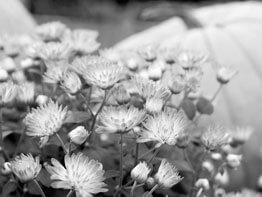With autumn just around the corner, many are planting mums and asters, replacing impatiens and petunias with pansies and cabbages, feeding trees and shrubs, and cleaning up garden beds.
Gardeners, however, should think longer term.
What do you want your garden and yard to look like when a cold wind blows on barren trees this winter? We all love to see something beautiful during this time of the year, and now is the time to plan and plant for winter – and beyond.
Consider landscaping with trees that look beautiful in every season, especially when they have no leaves at all. A visit to your local nursery will find several options: The popular native river birch is known for its multiple trunk stems and gorgeous, peeling white bark. The Senkai Maple, or Japanese coral maple, has a striking red bark, bright green spring leaves and brilliant gold fall leaves. Don’t miss the unusual Harry Lauder’s walking stick, or contorted filbert. Twisted sculptural branches make it visually striking year round, but especially in winter. Witch hazel bush is not something most of us are familiar with outside of our medicine cabinet, but it blooms in February and March with striking red or yellow flowers.
There is nothing like seeing a bush in bloom in the winter, so don’t forget about planting winter-series camellia, with lush exotic flowers that bloom from November to March. Also consider the red twig or yellow twig dogwood bushes. Once the leaves drop, the brilliant red or yellow bark is gorgeous, contrasting against the white winter snow.
Plan for what you want to see grow in late winter and next spring. Spend some time selecting quality, fresh bulbs from the Netherlands. There is nothing more uplifting than coming home in late winter and seeing little flowers poking up in your garden. Don’t just settle for the usual varieties of crocus; there are many beautiful choices like miniature iris, which come up in early March.
If squirrels leave you reluctant to spend time and money planting bulbs, soak the bulbs in a product called Ropel, which leaves the bulbs distasteful. Sprinkle a generous, but not heavy layer of dried beef blood over the soil after burying the bulbs. Cow’s blood is high in nitrogen, which is pulled out of soil by the hardwood mulch that is used in so many gardens. It will fortify your soil and trick squirrels into thinking there are predators nearby. These tips will keep your bulbs intact. They’ll bloom beautifully and your amended soil will help produce a lush crop of perennials, roses and other flowers next year.
Finally, plan now for next summer by planting seeds that need hibernation periods. Forget-me–nots are a great example, as they need lengthy time in the ground. By planting these seeds this fall, you’ll have a beautiful ground cover of lovely flowers next summer.
Kelly Hellmuth is the owner of the Spade and Rake Garden Company (www.spadeandrake.com).


